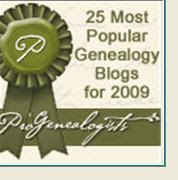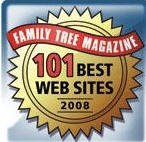 North Carolina has a long history of Jewish life, much the same as in other states, as immigrants arrived to create better lives.
North Carolina has a long history of Jewish life, much the same as in other states, as immigrants arrived to create better lives.The first Jew in what is today North Carolina was metallurgist Joachim Gans of Prague, who arrived at Roanoke Island in 1585 with Sir Walter Raleigh's second expedition. A year later, Gans returned to England.
The North Carolina Museum of History's exhibit (through March 7, 2011) - "Down Home: Jewish Life in North Carolina," is the first celebration of this minority culture. Along with the exhibit and a book, a television documentary recently aired and a special school curriculum (for 4th and 8th grades) was developed.
The project, in conjunction with the Jewish Heritage Foundation of North Carolina, took about six years to complete, including oral and written histories research, as well as extensive records from the 1840s-1880s. In the project's companion book, author Leonard Rogoff writes: "The challenge for native and immigrant Jews alike was to become southerners while remaining Jews."
Two recent stories, in the News Observer and the Herald Sun, provide details of the project, exhibit and book.
"It was not always assumed North Carolina had a Jewish history or that it was significant," said Leonard Rogoff, exhibit curator and the author of a companion book published by UNC Press. "But we found it, and it dates back to 1585."Jewish immigrants settled in ports, such as Wilmington - the first and largest Jewish community and the state's first synagogue. Jews served in the Confederate army. In the late 1870s, there were Jews from Poland, Bavaria, Prussia and the Netherlands as well as the native-born, living in Durham. Some 300 Jews were listed in the 1870 census.
In the late 1800s, Eastern European Jews were directed to the South by a Baltimore dry goods warehouse owner whose agents met immigrant Jews at the docks to offer them peddling. Many settled in North Carolina and graduated from wagons to permanent shops. Such chains as Family Dollar and Pic 'n Pay Shoes began in this way. Other families - Cones of Greensboro, Blumenthals of Charlotte - built factories and plants for a variety of items.
The museum exhibit is intended to teach non-Jews about their Jewish neighbors, and includes prayer books, kipas and a shofar (ram's horn). There's also a 1950s Jewish kitchen with a refrigerator and a pot of matzo ball soup on the stove, and visitors can braid challah or write down their own memories and family recipes.
Things weren't always so easy. The prestigious Duke University had a 3% Jewish quota in the 1930s-40s, and school organizations were divided along religious lines. Fast forward to 1988 and 1994, when two North Carolina Jews won Nobel science prizes.
Harry Golden - a former stockbroker and humorist - moved to Charlotte in 1941 and began publishing "The Carolina Israelite," which served as a pulpit for civil rights advocacy.
He is probably best known for his "Vertical Negro Plan," in which he recommended eliminating chairs to solve the problem of segregation. (Southern whites didn't mind standing with blacks, but they didn't want to sit down alongside them.)The Herald Sun story quotes Leonard Rogoff, author of the book and exhibit curator, as saying the project has two missions: "To tell who we are. To tell how we are."
 Visitors can see a seder table, an early immigrant's peddler cart. They are also asked questions to think about:
Visitors can see a seder table, an early immigrant's peddler cart. They are also asked questions to think about:"Why do Jews need to study? Isn't belief enough?" and "If I'm a JewishAmerican, am I different than other Americans?" and "Why is it said where there are two Jews, there will be three questions?"The first section - Keeping the Faith - asks a question that non-Jews might have:
"Is Judaism an ethnicity, a culture or a religion?" "Yes, yes and yes."It also provides information on prominent families:
One area displaying merchants' information and photographs from over the years includes a familiar name in Durham: E.J. "Mutt" Evans, a 1928 graduate of UNC and the mayor of Durham from 1951 to 1963. His store, Evans United Department Store, was the only store on Main Street with an integrated lunch counter before integration. When a local judge told him that the state prohibited blacks and whites from sitting together in public, Evans took out the tools and raised the countertop to elbow height.Detailed in the second article is the role of Jews in the tobacco industry. In 1881, Moses Gladstein in New York brought more than 100 workers to tobacco king Buck Duke's factory, where they were supervised by Joseph Siegel. Duke's competition, W.T. Blackwell, hired Joseph's brother David to bring workers to his factory. Although the Duke workers left following problems, Gladstein stayed. His brother, Louis, opened a men's clothing store which remained open until the 1970s.
The "Down Home" project took about six years to complete, including oral and written histories research, as well as extensive records from the 1840s-1880s.
"The challenge for native and immigrant Jews alike," writes Rogoff in the book, "was to become southerners while remaining Jews."
The book - "Down Home: Jewish Life in North Carolina" - is $35 (UNC Press). For more, read the two newspaper articles (links above), and visit the Jewish Heritage Foundation of North Carolina.





































No comments:
Post a Comment